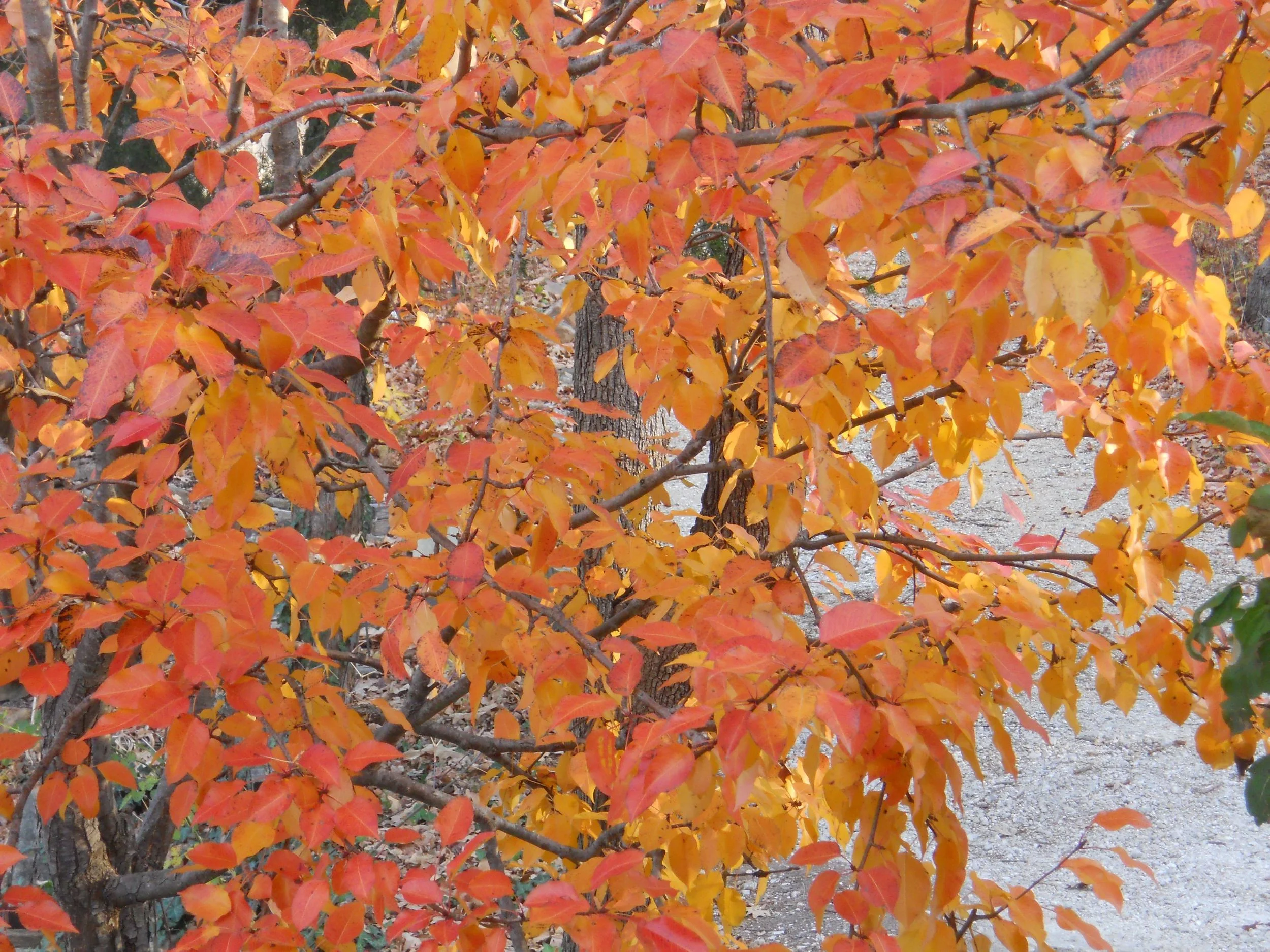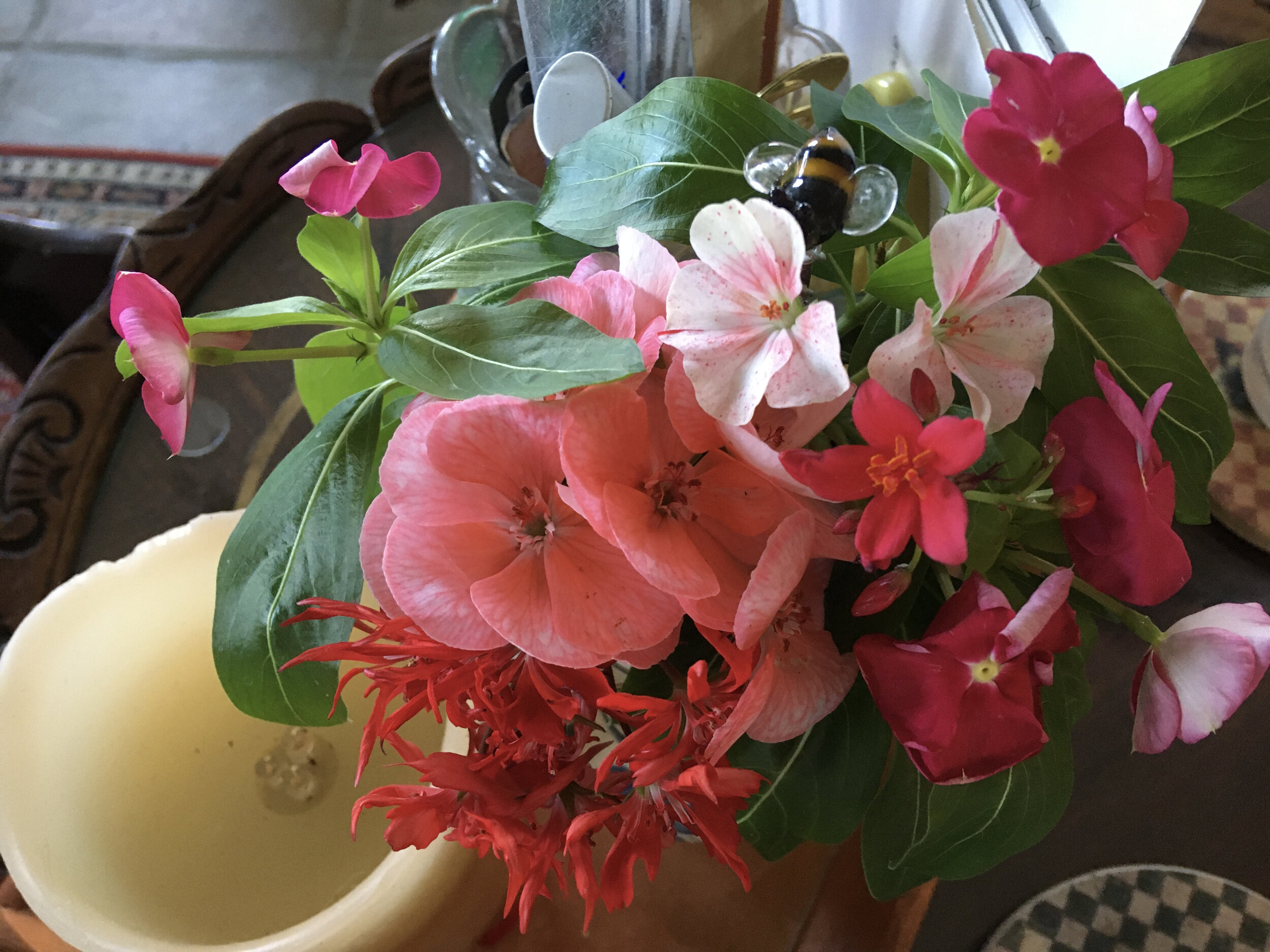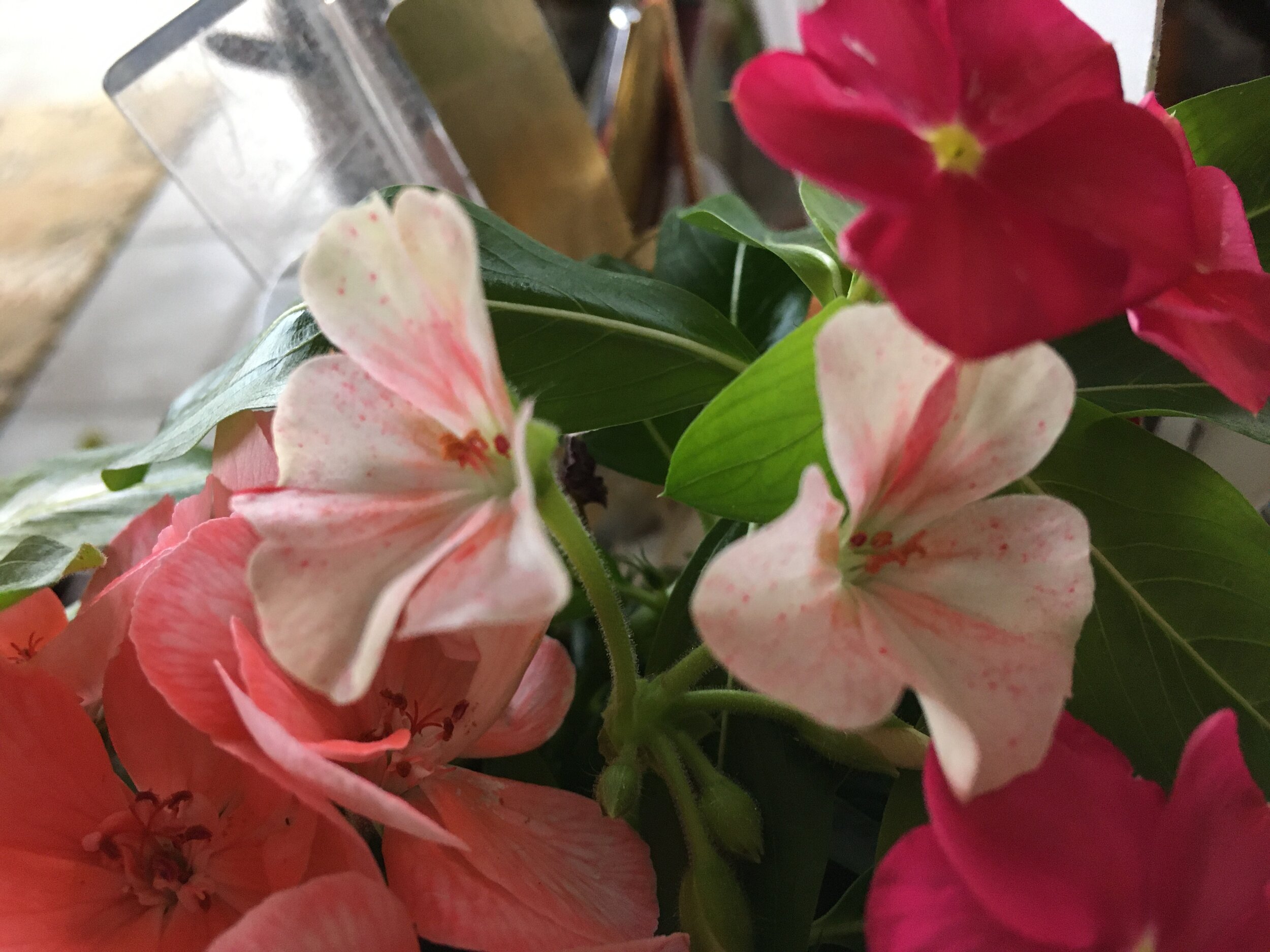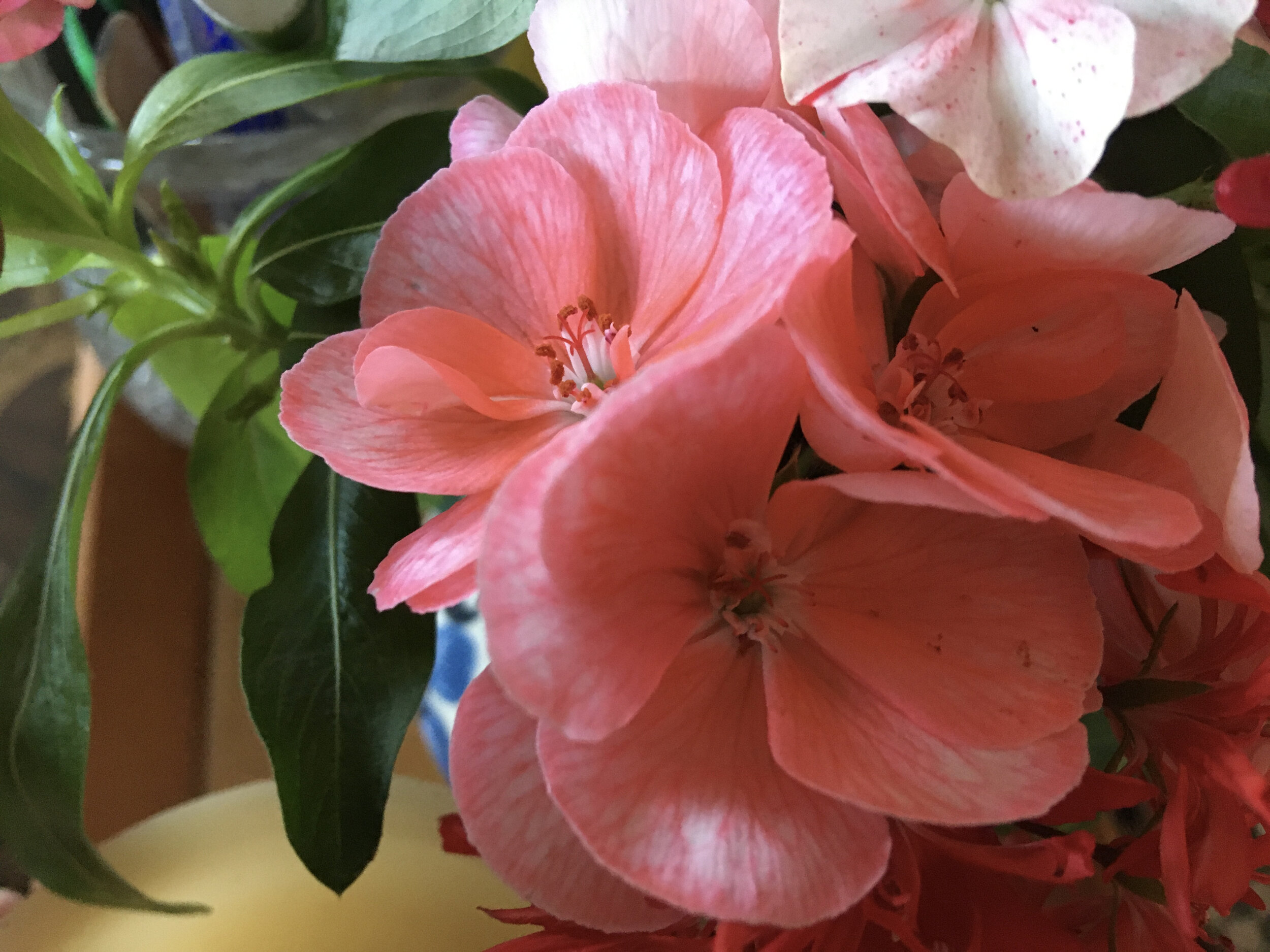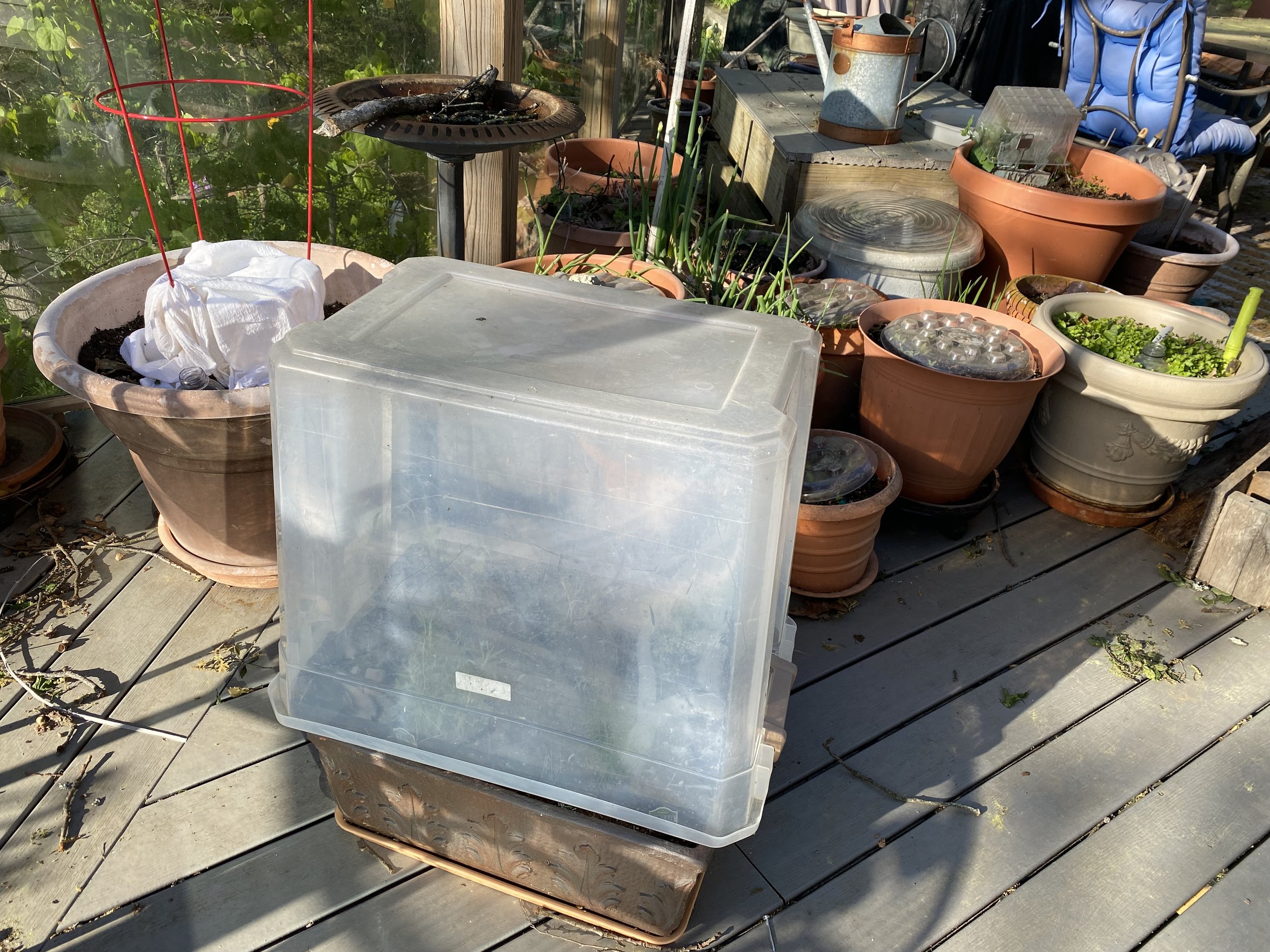Winter Flowers
/Do you recognize these flowers? They are favorite summer bloomers. (Photo by Charlotte Ekker Wiggins)
Winter Flowers
There are many exotic plants that bloom over winter to give us flowers - moth orchids, Poinsettias and Amaryllis bulbs, even African violets. But you can also have a little bouquet of flowers if keep these two plants in pots inside: geraniums and vinca.
Both considered annuals where I live in mid-Missouri, these hardy plants are good bloomers through summer and fall outside. By the time the first frost hits our area, people tend to toss out the vinca and maybe store geranium roots in brown bags.
I bring both inside in pots and make sure they have a good amount of sunshine in southern windows. Over the years, these have been my continuously-blooming flowers through winter, giving me enough color to make small bouquets.
This red geranium adds interest contrast to the thicker traditional geranium petals, (Photo by Charlotte Ekker Wiggins)
Studies show that flowers contribute to our sense of happiness and well being. Having even a little bouquet through winter is a good pick me up and can be a thoughtful gift in the middle of a cold spell.
These are a new geranium now starting to bloom. (Photo by Charlotte Ekker Wiggins)
This light pink geranium was a 25 cent purchase at the end of the season at one of our home and garden centers. I didn’t know what color it was but I knew the geraniums grow well for me potted inside.
These peach geraniums bloomed continuously earlier this summer. (Photo by Charlotte Ekker Wiggins)
Geraniums are available during the growing season in a wide range of colors from white to variegated. They are also used in both hanging baskets as well as containers making them quite versatile.
I have a gorgeous dark pink one that is setting buds in my office but not currently in bloom. i’ve had that geranium for more than 8 years. I give it new soil every fall so that it has a good boost to bloom through winter.
Pink vincas also bloom well inside over winter. (Photo by Charlotte Ekker Wiggins)
ere’s another surprise. The popular vincas will also grow well potted inside. These hot pink ones have been wintering over with me for several years.
Come spring, they get repotted in fresh soil and spend the summer outside on my deck.
So next time you have some favorite annuals in pots, bring them inside and give them the right light. You may also enjoy flowers all four seasons year around!
Charlotte
